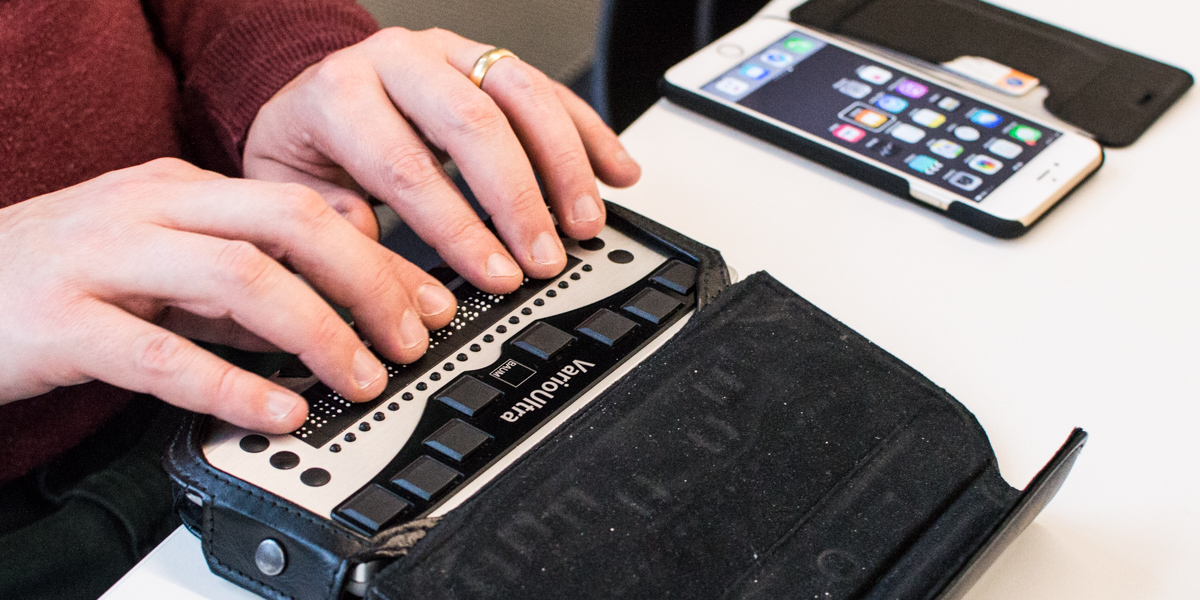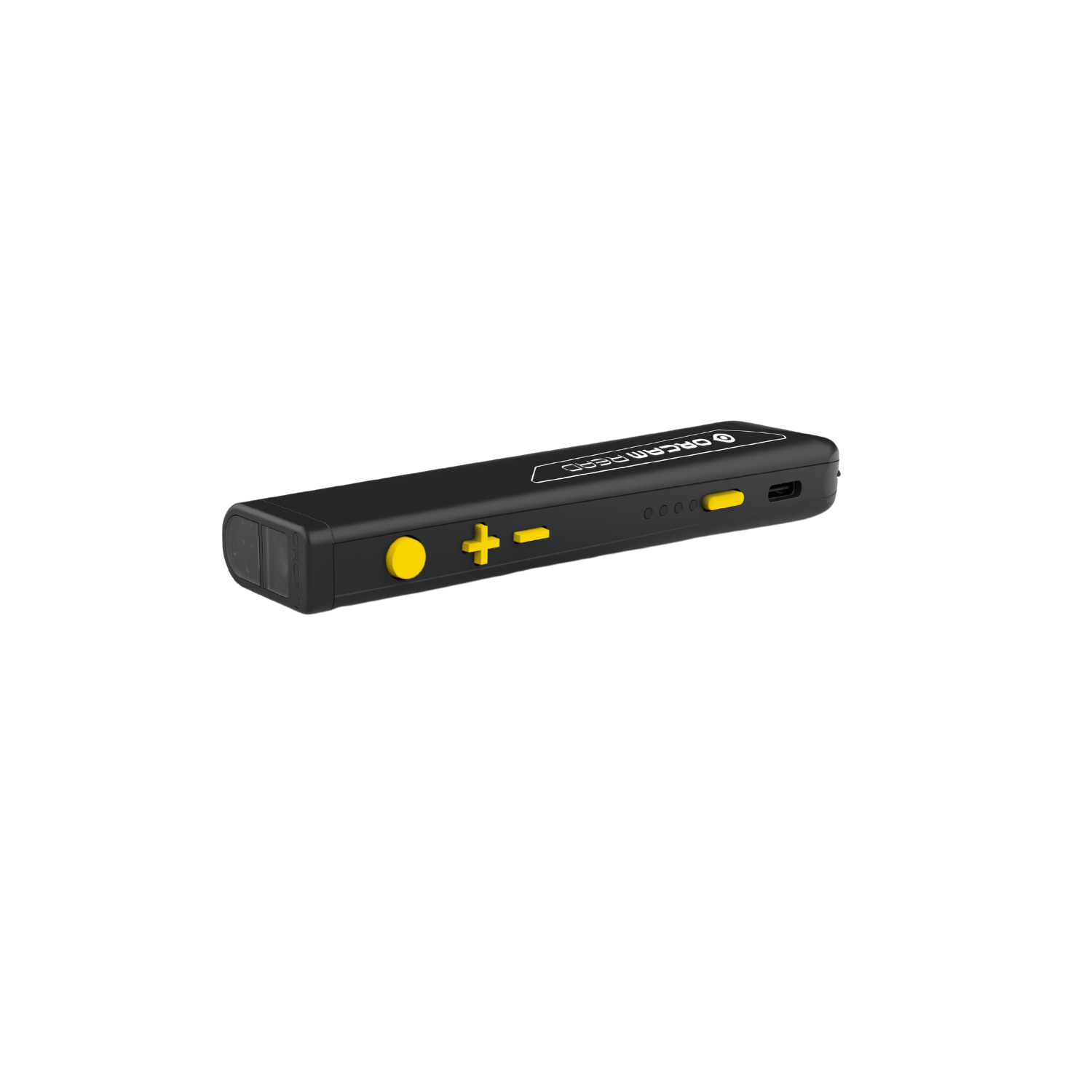Portable Technology for Low Vision: A Revolution in Accessibility
Portable Technology for Low Vision: A Revolution in Accessibility
Blog Article
Enhancing Lives With Advanced Assistive Devices for the Blind
The combination of innovative assistive tools for the blind is transforming exactly how people experience their environments and engage with their areas. Technologies such as increased fact wise glasses and sophisticated digital traveling aids not only help with navigating but additionally improve overall lifestyle. These modern technologies cultivate a feeling of autonomy and self-efficacy among users, allowing them to carry out day-to-day tasks with newly found self-confidence. The effects of these improvements extend beyond simple functionality; they test social understandings of impairment and freedom. What does this evolution imply for the future of assistive innovation and its role in empowering people?
Introduction of Assistive Instruments
Assistive tools for the blind incorporate a varied series of innovations and tools developed to enhance self-reliance and enhance the lifestyle for people with visual problems. These tools satisfy numerous requirements, from navigating and mobility to communication and day-to-day job management.
Among the primary categories of assistive tools consists of wheelchair help, such as white walking canes and overview dogs, which aid customers navigate their environments safely. Digital travel help, outfitted with sensors and audio feedback, likewise play a substantial function in flexibility enhancement.
Additionally, gadgets that assist with everyday living activities, such as flexible kitchen area devices, Braille labels, and chatting watches, empower people to perform jobs independently. Interaction aids, including screen visitors and Braille displays, assist in accessibility to information and make it possible for individuals to involve efficiently with the electronic globe.
Moreover, low-tech solutions like amplifying glasses and large-print materials stay vital for numerous customers. Collectively, these assistive gadgets offer not just as practical tools yet additionally as important enablers of autonomy, fostering greater involvement in a world that often focuses on sighted experiences. Their combination right into life is essential for advertising inclusivity and boosting total health for those with visual disabilities.
Ingenious Technologies being used
Innovation in modern technology has actually dramatically transformed the landscape of devices readily available for individuals with visual problems. Amongst one of the most significant innovations are wise glasses incorporated with enhanced truth, which supply real-time navigation support and item recognition. These tools utilize progressed cams and expert system to supply auditory signs, boosting the individual's spatial awareness and freedom.
In addition, mobile applications have become effective resources, allowing users to recognize currency, read text aloud, and browse unknown environments via spoken directions. Devices such as Braille displays and refreshable Braille gadgets remain to progress, using seamless connectivity with computers and mobile phones, consequently improving interaction and access to details.
Wearable innovation, including smartwatches furnished with voice-activated attributes, further encourages users by facilitating quick access to alerts and notifies without requiring visual involvement. Responsive maps and 3D printing are also obtaining traction, using tangible representations of areas that help in positioning and mobility training.
Jointly, these cutting-edge modern technologies not just boost the every day lives of aesthetically damaged people but likewise foster higher self-reliance, inclusivity, and involvement with the more comprehensive community, therefore reshaping perceptions of access. (Wearable technology for low vision)
Individual Stories of Empowerment
Empowerment commonly arises from personal experiences that highlight the transformative effect of modern technology on individuals with visual problems. Take, for circumstances, the story of Sarah, a young artist who restored her passion for painting via the usage of a clever cane outfitted with challenge detection. This tool not just promoted her wheelchair yet instilled a newly found confidence, enabling her to navigate public spaces independently and seek her innovative ventures.

These stories emphasize the profound effects that advanced assistive devices can have on day-to-day live. By making it possible for individuals to overcome obstacles, innovation fosters a sense of autonomy and self-worth. Such empowerment stories work as a testament to the potential of advancement, illustrating how the right devices can considerably boost quality of life and open doors to new possibilities for those with aesthetic disabilities.
Advantages of Advanced Solutions
Just how can advanced solutions fundamentally enhance the lives of individuals with visual problems? The assimilation of sophisticated technology right more tips here into assistive tools dramatically transforms daily experiences for those influenced by vision loss. These innovative solutions supply extraordinary autonomy, enabling more tips here users to navigate their settings with confidence. Devices such as smart walking canes outfitted with sensors, navigation applications, and wearable technology are made to give real-time responses, enhancing spatial recognition and minimizing the risks related to flexibility.
Furthermore, progressed assistive modern technologies foster social inclusion by assisting in interaction and communication. Voice-activated devices and apps enable people to gain access to details and involve with their environments individually, damaging barriers that previously hindered their participation in academic, expert, and social setups.
In addition, the customization and versatility of these solutions deal with the varied demands of individuals, consequently boosting their total lifestyle. Boosted capability, such as object recognition and text-to-speech capacities, equips individuals with aesthetic disabilities to perform tasks that they may have once found testing. Eventually, progressed assistive innovations not just boost independence and safety but additionally advertise dignity and self-worth, enabling individuals to lead satisfying lives.
Future Patterns in Assistive Technology
As modern technology remains to evolve, the landscape of assistive devices for the blind is positioned for remarkable advancements that will certainly better boost access and freedom. Emerging trends in assistive technology indicate a change toward raised integration of fabricated intelligence (AI) and machine learning, allowing tools to adapt to private customer requires in real-time. These developments are anticipated to help with even more user-friendly navigating More hints systems that can recognize obstacles and give audio comments, considerably improving outdoor mobility.
Additionally, the advancement of wearable technology, such as wise glasses outfitted with enhanced reality, will certainly enable customers to get contextual info concerning their surroundings, thereby enhancing their spatial understanding. Improvements in haptic modern technology guarantee to produce responsive comments devices, allowing users to perceive info via touch, improving understanding and communication with their setting.
Telecommunication advancements are likewise paving the way for remote aid remedies, where skilled professionals can supply advice using video telephone calls, making certain assistance is conveniently accessible. As these patterns unfold, the future of assistive gadgets for the blind will undoubtedly promote higher autonomy, empowering individuals to navigate their world with confidence and convenience.

Final Thought
The assimilation of sophisticated assistive devices for the blind stands for a significant innovation in fostering freedom and enhancing lifestyle. By making use of ingenious technologies, these devices empower individuals to browse their atmospheres with greater confidence and freedom. As the field remains to evolve, ongoing r & d will likely generate much more sophisticated options, even more changing the lived experiences of individuals with aesthetic impairments and promoting a better sense of addition within culture.
The combination of innovative assistive devices for the blind is transforming exactly how people experience their environments and communicate with their areas. The combination of sophisticated innovation right into assistive tools substantially changes daily experiences for those influenced by vision loss.As innovation continues to progress, the landscape of assistive tools for the blind is poised for exceptional innovations that will additionally boost ease of access and independence. Arising patterns in assistive technology indicate a shift towards boosted assimilation of artificial intelligence (AI) and maker learning, enabling gadgets to adapt to individual customer needs in real-time.The assimilation of innovative assistive tools for the blind represents a considerable innovation in fostering freedom and boosting top quality of life.
Report this page